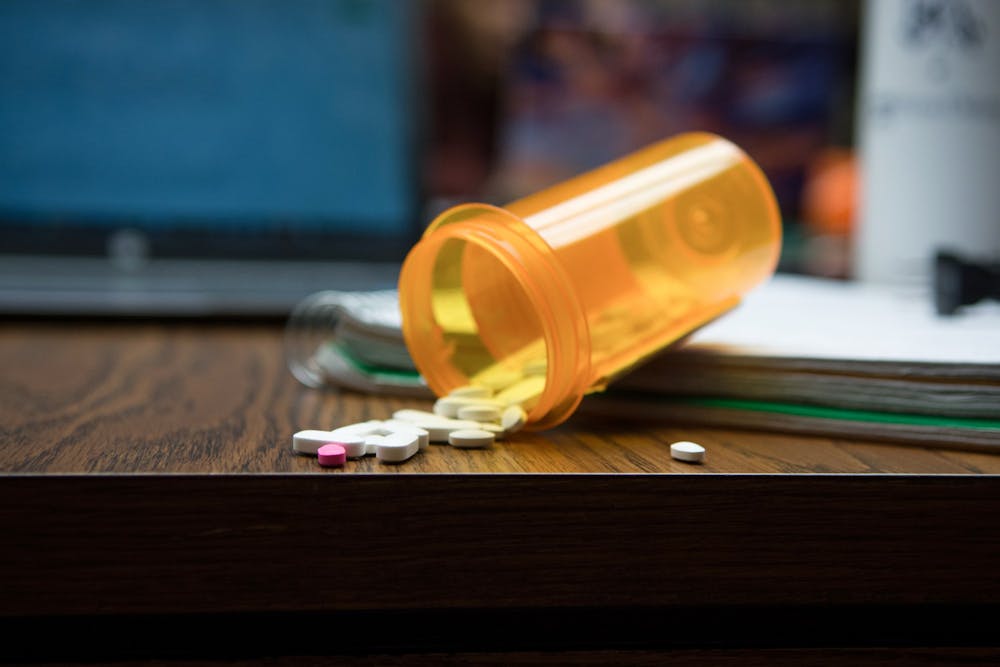
In recent years, an estimated 3,000 people have died from opioid overdoses in Philadelphia — a city with one of the highest opioid-related death rates among the nation's largest counties. Although evidence-based treatment has proven effective for opioid use disorder, researchers at Penn's Leonard Davis Institute of Health Economics have found that few overdose survivors receive critical follow-up treatment.
After reviewing 6,500 commercial insurance claims from opioid overdose patients to the emergency department between 2011 and 2016, Austin Kilaru and Utsha Khatri, who are both LDI researchers and National Clinician Scholars Program fellows at the Perelman School of Medicine, found that only 1 in 6 patients received treatment within 90 days of their overdose.
Follow-up treatment for overdose survivors include medication, outpatient clinic visits, or rehabilitation services, according to the May 27 study.
The LDI researchers also found a significant racial disparity in patients who received follow-up treatment, as Black patients were half as likely to receive follow-up treatment as non-Hispanic white patients.
The LDI report concluded that 1 in 10 patients who had not previously received opioid overdose treatment received follow-up treatment. A recent national study found that only 16% of privately insured patients received follow-up treatment, despite the 6% mortality risk to opioid overdose survivors in the year after receiving treatment, Penn Today reported.
Opioids, which produce feelings of pleasure and pain relief in the nervous system, are often legally prescribed by healthcare providers to manage severe and chronic pain, while other opioids are classified as illegal drugs of abuse.
Opioid addiction — also known as opioid use disorder — is the chronic reliance on opioid drugs which produces both physical and psychological withdrawal symptoms. If an overdose is not treated immediately, it can result in unconsciousness and death.
The LDI report found that the recent popularity of telehealth, the distribution of health-related services via technology, may have long-lasting impacts on how follow-up treatment for opioid overdose survivors is conducted.
The LDI researchers suggested that a long-term shift to telemedicine may have unintended consequences that increase racial inequities in obtaining opioid overdose treatment.
“Vulnerable populations and racial minorities are known to experience disparities in access to telehealth, with less access to technology and technological literacy,” Kilaru and Khatri wrote in the report.
They also stated that COVID-19 has demonstrated the vulnerabilities of marginalized populations, and that solutions to the opioid crisis must be offered with equitable access.
The Center for Opioid Recovery and Engagement at Penn Medicine currently provides buprenorphine, an opioid used to treat opioid dependency and chronic pain, as well as access to addiction recovery specialists through a telehealth service. In March, the Drug Enforcement Agency allowed the initiation of buprenorphine through telemedicine visits.
In September, Penn Medicine announced the launch of the Penn Addiction Center of Excellence to combat opioid addiction. The center brings together researchers from the Radiology and Psychiatry Departments who study the impacts of opioids on the brain in order to develop new treatments for opioid addiction.
Last April, Penn held a sold-out forum on the opioid crisis, headlined by former Vice President and Penn Presidential Professor of Practice Joe Biden and Penn President Amy Gutmann, who were joined by government officials and professors. The experts discussed the severity of the opioid crisis and the benefits of decriminalizing addiction.
The Daily Pennsylvanian is an independent, student-run newspaper. Please consider making a donation to support the coverage that shapes the University. Your generosity ensures a future of strong journalism at Penn.
Donate







